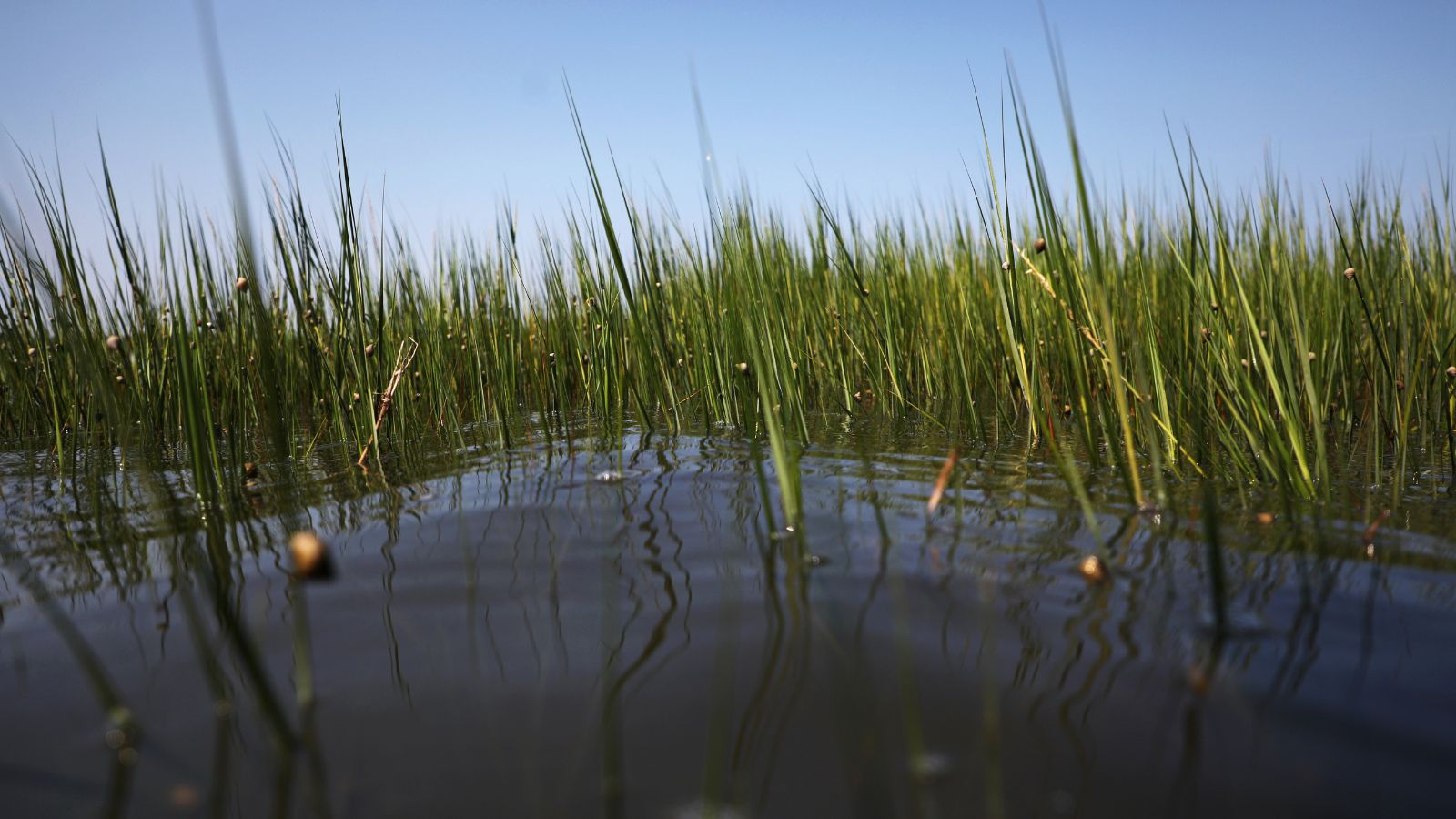Salt marshes, mangrove swamps, and sea grass meadows teem with birds and fish.
With thick vegetation and rich soils, these habitats also absorb a lot of planet-warming carbon dioxide, helping to reduce climate change. So they’re often referred to as “blue carbon” ecosystems.
“Some of these coastal blue carbon ecosystems have been shown to draw down carbon at 10 times the rate per area of tropical forests,” says Zachary Cannizzo of the National Oceanic and Atmospheric Administration.
He says mangrove swamps, salt marshes, and sea grass meadows are important, but they cover less than 1% of Earth’s surface.
And many are rapidly disappearing as a result of pollution, development, or agriculture.
“You see a lot of conversion of mangroves into shrimp farms,” Cannizzo says. “When you convert a mangrove into a shrimp farm, you no longer have that ability to pull the carbon dioxide out of the atmosphere.”
So the carbon stored in the plants and soil can be released.
“They can almost act as carbon bombs and release a large amount of carbon into the atmosphere if and when they are destroyed,” he says.
So to protect the climate, Cannizzo says it’s critical to conserve blue carbon ecosystems.
Reporting credit: Ethan Freedman/ChavoBart Digital Media
Source link


